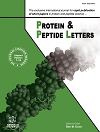- Home
- A-Z Publications
- Protein and Peptide Letters
- Previous Issues
- Volume 25, Issue 3, 2018
Protein and Peptide Letters - Volume 25, Issue 3, 2018
Volume 25, Issue 3, 2018
-
-
ScFv Improvement Approaches
More LessAuthors: Peyman Bemani, Mozafar Mohammadi and Ali HakakianThe most common recombinant antibody format is the single chain fragment variable (scFv) which it contains the complete antigen-binding domains of an intact antibody. ScFv fragments have found vast medical and non-medical applications. Several approaches have been employed to increase the affinity, avidity and structural stability related to these antibody fragments. Most approaches related to scFv improvement Read More
-
-
-
Engineering Clostridium absonum 7α-hydroxysteroid Dehydrogenase for Enhancing Thermostability Based on Flexible Site and ΔΔG Prediction
More LessAuthors: Deshuai Lou, Jun Tan, Liancai Zhu, Shunlin Ji, Shijin Tang, Kaiyi Yao, Jingxuan Han and Bochu WangBackground: Enhancing thermostability of the 7α-Hydroxysteroid dehydrogenases (7α-HSDHs) is beneficial to its industrial application broadly. For protein engineering to enhance thermostability the nonrational strategy, directed evolution, has been applied in obtaining more stable proteins through error-prone PCR or DNA rearrangement generating random mutations. However, the successful application of directed evolutio Read More
-
-
-
Contributions of the Hydrophobic Helix 2 of the Bordetella pertussis CyaA-hemolysin to Membrane Permeabilization
More LessBackground: Adenylate cyclase (CyaA) is one of the major virulence factors of Bordetella pertussis that plays a key role in whooping cough pathogenesis. A putative transmembrane helical hairpin (α2-loop-α3), encompassing residues 529-594 of CyaA hemolysin (CyaA-Hly) domain, was previously proposed to be crucially involved in hemolytic activity against target erythrocytes. Objective: The main objective of this study Read More
-
-
-
Generation of the Fluorescent HPV16 E7 Protein for Detection of Delivery in vitro
More LessAuthors: Sepideh Shahbazi, Azam Bolhassani, Arash Arashkia and Esmaeil SadroddinyBackground: Immunotherapies targeting the human papillomavirus (HPV) oncogenic proteins, E6 and E7, are effective to treat HPV-associated cervical malignancies. Objective: The main objective of this study was to generate the fluorescent HPV16 E7 protein for detection of delivery in vitro. Methods: Two types of the fusion E7-GFP proteins (i.e., with or without linker) were expressed in different E. coli strains. Then, the e Read More
-
-
-
Proteomic Analysis of Vernalization Responsive Proteins in Winter Wheat Jing841
More LessAuthors: Yalan Feng, Beibei Kong, Jun Zhang, Xianni Chen, Jiale Yuan, Xingwang Tang and Chao MaBackground: Vernalization is one of the pivotal ways for plants to flower. The twodimensional gel electrophoresis (2-DE) and matrix-assisted laser desorption/ionization time-offlight/ time-of-flight mass spectrometry (MALDI-TOF/TOF MS) were applied to analyze the changes in protein expression profiles in responding to vernalization in leaves of wheat seedling before (0d) and after (30d) of vernalization. Objective: The main objec Read More
-
-
-
Interaction of Cu+2 with α-Crystallin: A Biophysical and Mass Spectrometric Study
More LessAuthors: Srabani Karmakar and K.P. DasBackground: αA- and αB- crystallin are members of small heat shock protein family with chaperone property. Their interactions with Cu2+ ions are reported in neurodegenerative diseases. We have been studying the effect of small ionic molecules on the stability of α-crystallin. Cu2+ is co-ordinated with αB-crystallin involving three histidine residues and one aspartic acid residue as potential binding sites. However, copper b Read More
-
-
-
Immunomodulatory Effects of the Water-soluble Lectin from Moringa oleifera Seeds (WSMoL) on Human Peripheral Blood Mononuclear Cells (PBMC)
More LessBackground: Moringa oleifera is used in traditional medicine as well as in food, cosmetic, and pharmaceutical industries. Water-soluble M. oleifera lectin (WSMoL) is an anionic protein isolated from the seeds of this tree. Until now, immune responses promoted by this lectin in human PBMC have not been investigated. Objective: The main objective of this study was to investigate the immunomodulatory effects of WSMoL on huma Read More
-
-
-
Effect of Various Polyols on the Acid-Denatured States of Champedak Galactose-Binding Lectin
More LessAuthors: Nurul I.A. Kameel, Adawiyah S. Shuib and Saad TayyabBackground: Champedak galactose-binding (CGB) lectin is a tetrameric protein with noncovalently bound monomers, isolated from Artocarpus integer fruit seeds. We had previously reported existence of a structured monomer and an unfolded monomer of CGB lectin at pH 2.5 and pH 1.5, respectively. Polyols are known to induce significant refolding in denatured proteins and stabilize proteins against environmental stresses Read More
-
Volumes & issues
-
Volume 32 (2025)
-
Volume 31 (2024)
-
Volume 30 (2023)
-
Volume 29 (2022)
-
Volume 28 (2021)
-
Volume 27 (2020)
-
Volume 26 (2019)
-
Volume 25 (2018)
-
Volume 24 (2017)
-
Volume 23 (2016)
-
Volume 22 (2015)
-
Volume 21 (2014)
-
Volume 20 (2013)
-
Volume 19 (2012)
-
Volume 18 (2011)
-
Volume 17 (2010)
-
Volume 16 (2009)
-
Volume 15 (2008)
-
Volume 14 (2007)
-
Volume 13 (2006)
-
Volume 12 (2005)
-
Volume 11 (2004)
-
Volume 10 (2003)
-
Volume 9 (2002)
-
Volume 8 (2001)
Most Read This Month
Article
content/journals/ppl
Journal
10
5
false
en


